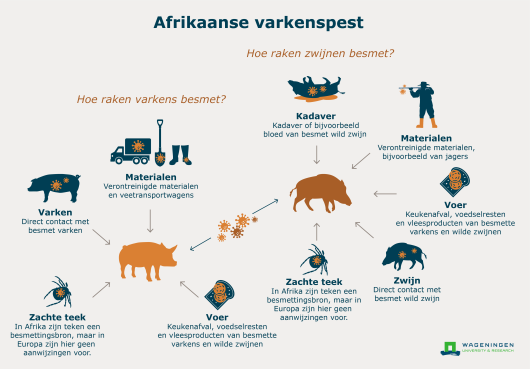Increasing reports of ASF in Eastern Europe
African Swine Fever (ASF) has this week been confirmed on Romania’s largest pig breeding farm where 140,000 animals are being culled.The virus was confirmed on the farm after water samples were sent to the authorities. Wageningen University & Research has a special webpage about the spreading of the disease.

African Swine Fever is a viral disease to which only pigs and wild boar are susceptible. After the initial infection, symptoms can take two to ten days to appear. Depending on the pathogenicity of the virus, 30% to 100% of the infected animals die.
Symptoms
Common symptoms include: loss of appetite, weakness, red skin, inflamed ocular mucous membranes, vomiting, bloody diarrhoea and fever. In addition, the skin may turn blue, areas of skin may die off (black stains) and haemorrhages may occur. Furthermore, the disease can cause spontaneous abortions in pregnant sows. Sudden death, without any prior noticeable symptoms, may also occur. The symptoms of ASF can resemble those of classical swine fever. The diseases, therefore, are difficult to distinguish from one another.
Pigs can survive the acute phase and appear to have recovered, only to become long-term carriers of the virus (from a few months to the entire lifespan), and thus excrete the virus again and infect other animals. The symptoms can also be recurring.